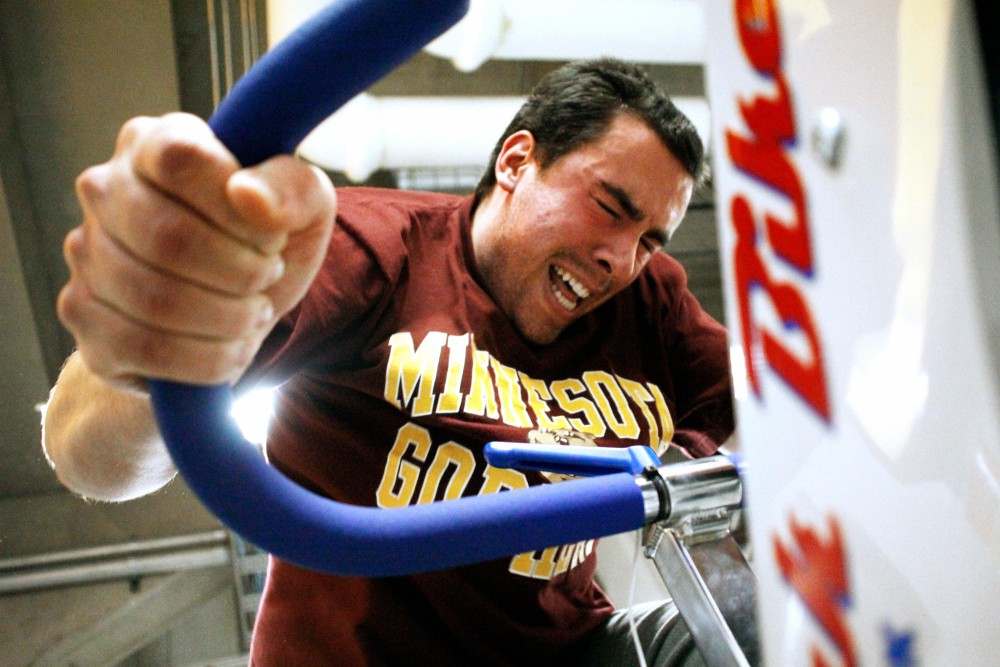Bendable model joints, virtual cadaver dissections and intense physical stress tests are a standard part of class for students in the Human Performance Teaching Laboratory.
The University of Minnesota lab in Mariucci Arena started small in 2006, but has grown into the countryâÄôs only dedicated teaching lab for kinesiology.
The labâÄôs $350,000 in teaching equipment is divided between the only four courses taught there. Using the lab, students cover topics like exercise, biomechanics, anatomy and human physiology âÄìâÄì all essentials for understanding kinesiology, the study of human movement.
âÄúWe try to stay as current as we can,âÄù said Donald Dengel, a University professor and the labâÄôs manager.
The lab is used strictly for teaching because research labs typically limit the availability of equipment to students, arenâÄôt designed to hold large classes and are less hands-on, he said.
Dedicating the HPTL to teaching gives students concrete examples of how their technology fees are spent when they see the labâÄôs
devices, Dengel said. That way, students have a guarantee the money is directly benefiting their studies.
Rather than forcing students to learn from textbooks and passive lectures, HPTL is unique in that it allows students to study interactively, said George Biltz, an instructor who uses the lab to teach two classes.
Multilayered plastic human hearts, moving models of joints and life-sized skeletons let students learn first-hand how injuries can occur. Students also handle bone fragments, analyze muscles and study the body during actions like throwing and running.
Some University athletes take one of the four courses to learn about ways to avoid injury on the field, Biltz said.
Special devices let students measure grip strength, joint angles, the electrical activity in muscles, how they walk and their center of mass, said Josh Aman, a biomechanics instructor.
âÄúThe importance of the lab is that students need functional knowledge,âÄù Biltz said.
Exams often involve some students cheering their peers on as they exercise vigorously on bikes hooked to electronic meters, among other physical tests. The physical exertion can cause some students to vomit.
âÄúUsually they make it to the bucket or the bathroom,âÄù Dengel said, adding that vomit hasnâÄôt hit the labâÄôs floor in recent memory.
Keith Lambert, a kinesiology student, said his favorite part of his KIN 4385 class was using the lab since his previous anatomy courses werenâÄôt interactive enough. He had just finished an anaerobic exercise exam.
âÄúI get to learn about the real physicality of exercise,âÄù he said, adding he hopes it will better prepare him to become a gym teacher.
A bank of computers loaded with anatomy software allows students to peel back interactive layers of human tissue using images of real cadavers.
âÄúLearning anatomy from a book may be accurate, but itâÄôs not the same as actually delving into deeper layers,âÄù Biltz said.
Four times each semester, classes use the cadaver lab in Jackson Hall to examine anatomy up close âÄî the computer simulations help them prepare for it, Biltz said.
âÄúOur students get this much more concentrated than regular anatomy courses,âÄù he said, because the classes focus on âÄúvisual learning and visual thinking.âÄù











